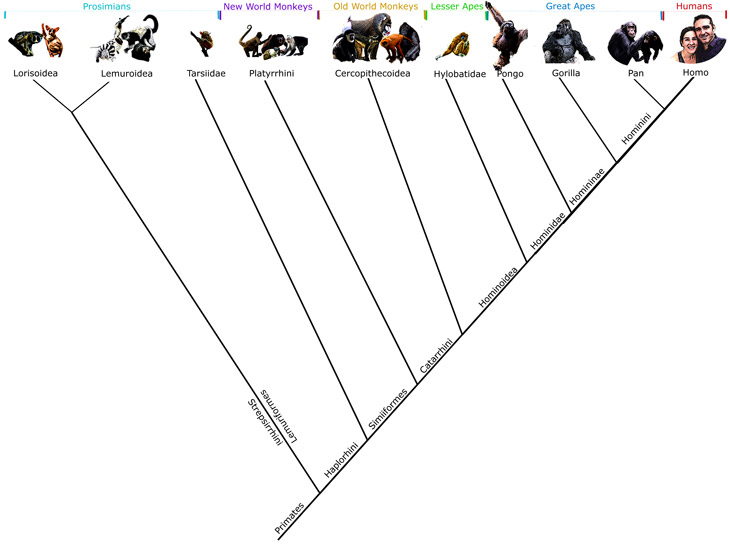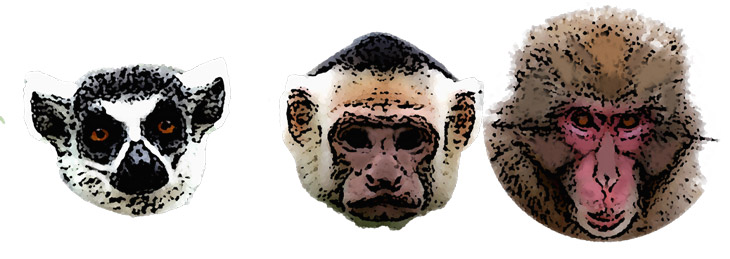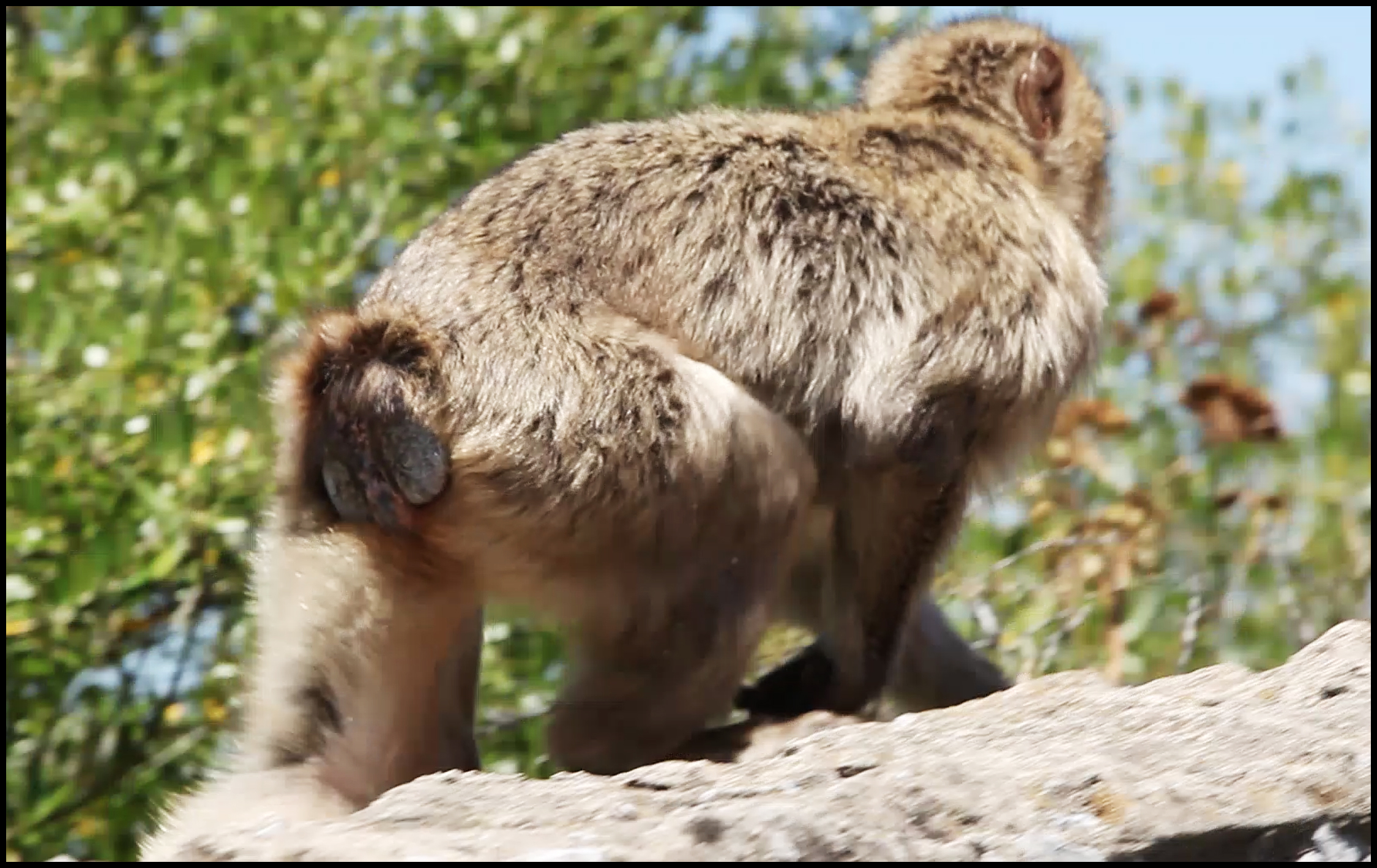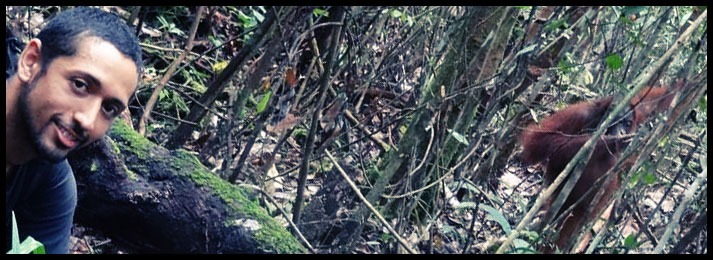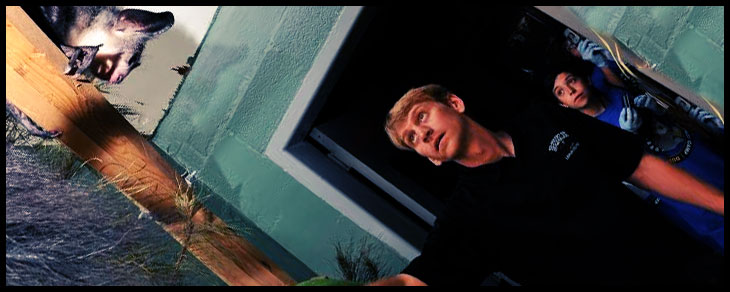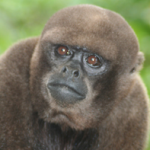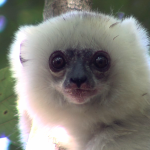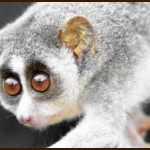Order Primates
Few debates have stirred such controversy as our own human relationship with the monkey.
Today, the controversy is a tad less intense, yet rages on in some circles. We’re starting to understand the diverse behaviors in the order and the relationships between families a bit more. We humans are primates, along with a lot of other apes and monkeys. There are certain characteristics that define us as primates. Here are the basics.
What is a primate?
A primate is a mammal in the order Primate. Obviously. Here is what the tree looks like.
Primates are organized into two groups, Haplorrhines and Strepsirrhines. The word haplorrhine translates to dry nose, and the word strepsirrhine translates to wet nose. The haplorrhiines, or dry nose primates, include monkeys, apes, humans, and tarsiers. Haplorrhines are split into three groups: 1) the catarrhines, old world monkeys, apes, and humans; 2) the platyrrhines, new world (South American) monkeys, and 3) tarsiers. Apes are found in Africa and South East Asia, and tarsiers are found only in South East Asia. The strepsirrhines, or wet nose primates, includes lemurs, aye-ayes, lorises, and galagos. Lemurs and aye-ayes are found in Madagascar, galagos are found in Africa, and lorises are found in South East Asia.
Catarrhines and platyrrhines are distinguished by the shape of their nostrils. Catarrhines have narrow downward facing nostrils, while platyrrhines have broad, flat, sideways facing nostrils.
There are certain physical features that help set primates apart from other animals. They have larger brains relative to their body size than other animals, and males tend to be larger than females. They tend to have relatively shortened snouts, rely more on vision than smell, have five fingers and toes and have nails instead of claws. Primates also have opposable thumbs that allow them to grab and manipulate opjects.
Primates have forward facing eyes that give them both binocular vision and stereoscopic vision. Their skulls are distinguishable from the skulls of other animals partly because their eye sockets are protected by a bony bar or are fully enclosed by bone. Haplorrhiines usually have full bony enclosure, while strepsirrhines usually have a bony bar.
While most mammals can only see in black and white, catarrhines and howler monkeys have full color vision. In other platyrrhines, females have full color vision, while males are red-green colorblind.
Most mammals are heterodonts, meaning they have multiple types of teeth consisting of some collection of canines, incisors, premolars, and molars. The average mammal has a dental formula of 3.1.4.3, meaning one side of the mandible has 3 incisors, 1 canine, 4 premolars, and 3 molars. Because primates have more flexible diets and shorter faces, they have fewer and more generalized teeth. Catarrhines, apes, and humans all have a dental formula of 2.1.2.3. Tarsiers have a dental formula of 2.1.3.3/1.1.3.3. Platyrrhines and strepsirrhines have a dental formula of 2.1.3.3, except for the aye-aye whose dental formula is 1.0.1.3/1.0.0.3. Lemurs have specialized lower incisors that are pushed together to form a tooth comb.
Monkeys are similar to other mammals in that they walk on all four limbs and have a tail. Monkeys that spend most of their time in the trees usually have shorter limbs and a longer tail, while monkeys that spend most of their time on the ground tend to have longer limbs and a shorter tail. Platyrrhines are almost exclusively in the trees, and some have evolved tails that can grasp branches acting like a 5th limb.
Apes do not have tails. They spend time both on the ground and in the trees. While monkeys walk on top of branches when in the trees, apes move through the trees by swinging below the branches. They have longer arms than legs, and have extremely shortened thumbs. These adaptations allow them to use their arms like long hooks so they can swing more efficiently.
Humans, strepsirrhines, and tarsiers have longer legs than arms. This is associated with walking upright on two legs in humans, and vertical clinging and leaping in strepsirrhines and tarsiers.
Primate evolution
Molecular evidence suggests that the first primates appeared between 70 and 80 million years ago during the Cretaceous epoch; however, the first fossil evidence of primate like mammals dates back to between 65 and 55 million years ago during the Paleocene epoch. These early primate-like creatures looked very similar to squirrels and tree shrews.
The first true primates appear in Asia, Africa, and North America in the beginning of the Eocene epoch about 55 million years ago. They were still small and similar to shrews, and fell into two families: The lemur like Adapidea, and the galago like Omomyidae. There were at least 60 genera between these two families, the majority of which went extinct sometime around 35 million years ago. Some of these early Eocene primates managed to get to Madagascar, where they thrived and evolved into modern lemurs.
The first monkeys evolved in Africa between 37 and 30 million years ago between the end of the Eocene and the beginning of the Oligocene. The first new world monkeys evolved 30 million years ago. It is thought that new world monkeys started as a group of old world monkeys that were isolated on floating islands during tropical storms. These floating islands were then thought to have drifted to South America.
The appearance of monkeys is associated with the extinction of majority of the early lemur like primates. Evidence suggests that monkeys outcompeted their predecessors, and that survivors either turned nocturnal or survived in areas without monkeys such as Madagascar.
Apes evolved from monkeys during the Miocene epoch about 21 million years ago. While modern times are dominated by monkeys, apes outnumbered other types of primates in Africa and Eurasia during the Miocene. By 9 million years ago, apes in Africa split into two lines: the group that would later become modern Gorillas, and a second group that split 7 million years ago into the Chimpanzee lineage and the Human lineage.
Primate societies
Primate societies are made up of three distinct parts: Social organization, mating system, and social structure. Social organization describes the size, sex ratio, and cohesion of a society. Mating systems describe which individuals mate with one another and the consequences for reproduction and genetics. Social structure describes the relationships and interactions among group members.
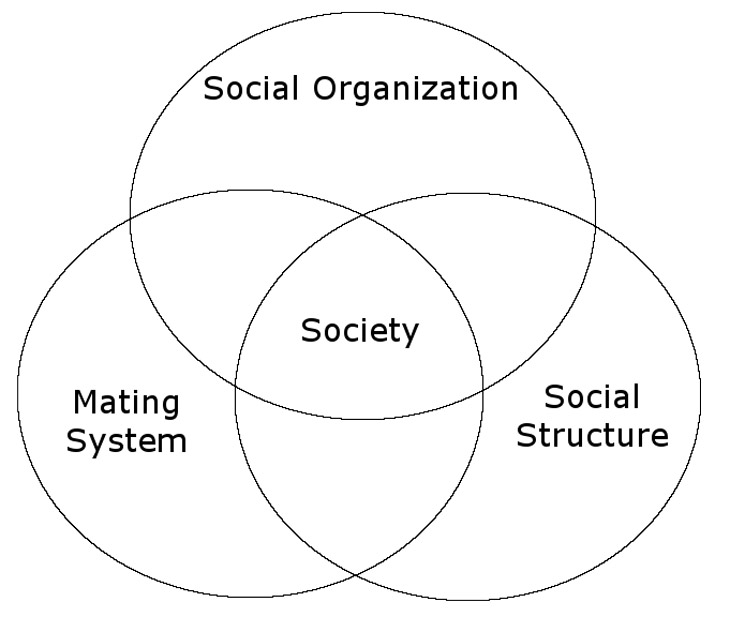 There are three basic types of social organization: solitary, pair-living, and group living. Solitary primates are still social with one another, but spend most of their time alone. Some examples of solitary primates are orangutans, tarsiers, and most nocturnal strepsirrhines such as mouse lemurs and lorises.
There are three basic types of social organization: solitary, pair-living, and group living. Solitary primates are still social with one another, but spend most of their time alone. Some examples of solitary primates are orangutans, tarsiers, and most nocturnal strepsirrhines such as mouse lemurs and lorises.
Pair-living primates are primates where one male and one female live together in a permanent pair. This is the rarest form of social organization among the primates. Some examples of pair-living primates are titi monkeys, owl monkeys, and gibbons.
The most common social organization in primates is group living. Group living primates are mixed groups of males and females with three or more adults.
There are four types of mating systems in primate societies: Monogamy, polyandry, polygyny, and polygynandry. Monogamy is when males and females mate with only one member of the opposite sex. Most pair living species are monogamous, however genetic evidence shows that most pair living species exhibit sneak matings, and only owl monkeys are truly monogamous.
Polyandry is when one female mates with multiple males and each male only mates with her. This is the rarest mating system and is only seen in marmosets and tamarins.
Polygyny is when one male mates with multiple females, and prevents other males from mating with those females. Some examples of polygynous primates are gorillas, geladas, and hamadryas baboons.
Polygynandry is when multiple males mate with multiple females. Chimpanzees, bonobos, and most monkeys are in multi-male multi-female polygynandrous groups.
Generally speaking, primate social structure is driven by food. Females are thought to organize themselves depending on the distribution of food in the environment, and males are thought to organize themselves around females. The amount and distributions of food leads to different amounts of females and different levels of competition amongst females. Competition shapes female dominance hierarchies. Access to females and female preference dictates competition between males and male-male interactions. These interactions shape male dominance hierarchies.
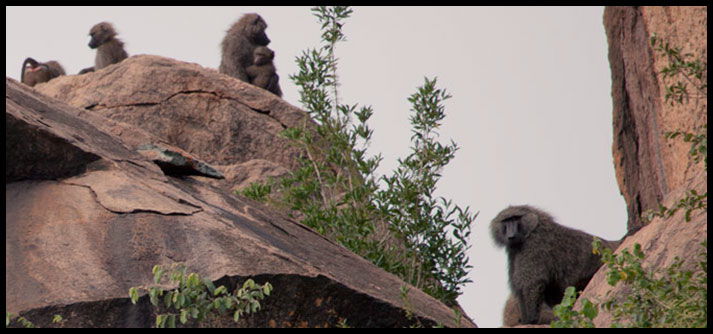
Primate diets
Primates have flexible diets that consist of a mix of fruit leaves and insects. Some primates also feed on gums, nectars, and seeds. Frugivores feed mostly on fruit, folivores feed mostly on leaves, and insectivores feed mostly on insects. Some primates have special adaptations that also allow them to feed on specific foods. For example, mangabeys and orangutans have thick tooth enamel that allow them to eat very hard foods; aye-ayes have a long middle finger that they use to find insects; and folivores have special digestive systems that allow them to get more nutrients from leaves.
Chimpanzees and humans have evolved flexible behaviors that allow them make tools, eat a much wider array of food, and hunt for meat.
Where do Primates Live?
Humans are classified in the order, along with lemurs, aye-ayes, lorisids, galagos, tarsiers, monkeys, apes, and great apes. Other than humans, primates are found in tropical or subtropical climates.
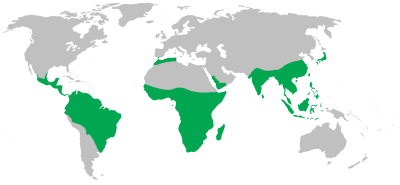
Do Primates Have Opposable thumbs?
A distinct characteristic of primates is their opposable thumbs. Opposable thumbs mean that the thumb is able to rotate and move independently of the other four fingers on the hand and helps in grabbing and manipulating objects. Opposable thumbs are one reason humans have learned to make and handle tools better than other animals. Try to write something on a piece of paper without using your thumb. Hard, isn’t it!?
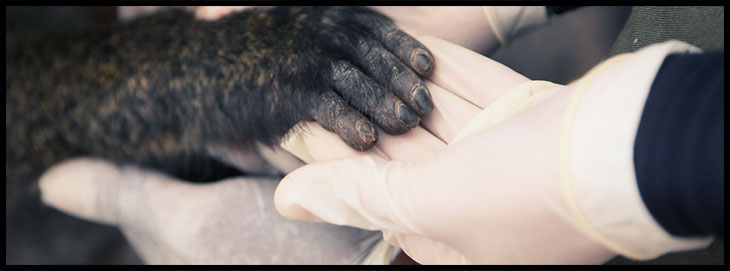
However, not all primates have fully opposable thumbs.
We can divide the primates into four groups based on their thumbs.
- Tarsiers and marmosets have non-opposable thumbs.
- The sub-order Strepsirrhini have pseudo-opposable thumbs and include lemurs, lorises, and galagos. The family Cebidae , also having pseudo-opposable thumbs, is a family of monkeys found in Central and South America, including capuchin and squirrel monkeys.
- Primates with fully opposable thumbs include the Great apes (humans, chimpanzees, gorillas, and orangutans) and Old World monkeys (those native to Asia and Africa) such as baboons and Colobus monkeys.
- A fourth group of monkeys have comparatively long opposable thumbs. These are the gibbons, also referred to as lesser apes.
Want to be a Primate Researcher / Educator?
What does it take to study primates? There are a lot of ways to do it. Here are a few researchers and educators that you can read up on and learn about how they do it. Take special note of the tips they give at the end of each interview for people starting out.
Shauhin Alavi – Field Biologist
Chris Smith – Duke Lemur Center Educational Specialist
Supporting Video about Primates by Untamed Science
- The Barbary Macaque on Gibraltar
- How to Track a Baboon
- Baboon Decision Making Rules
- Silky Sifaka Lemurs


